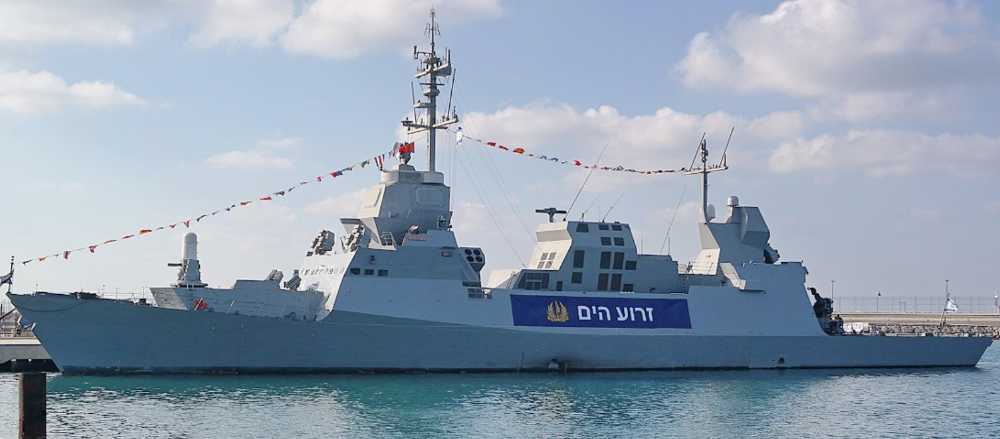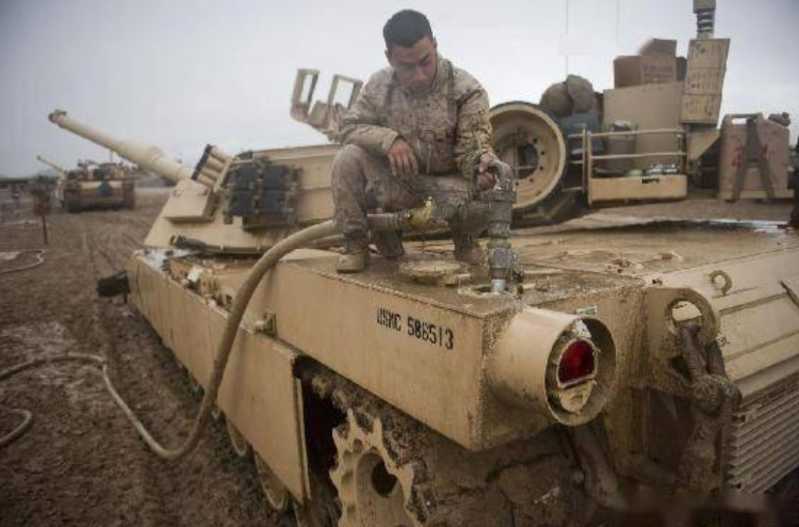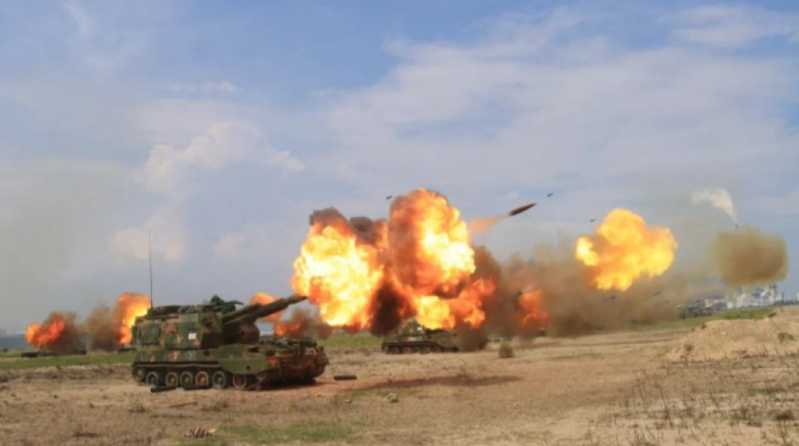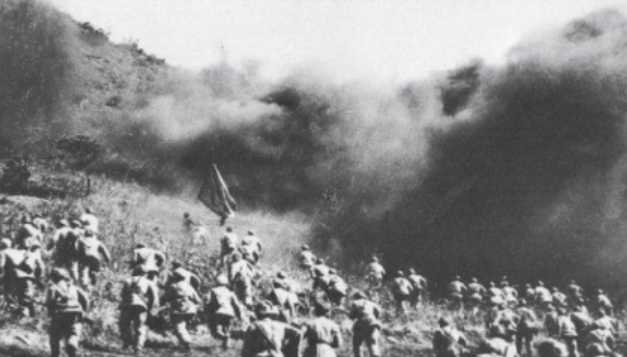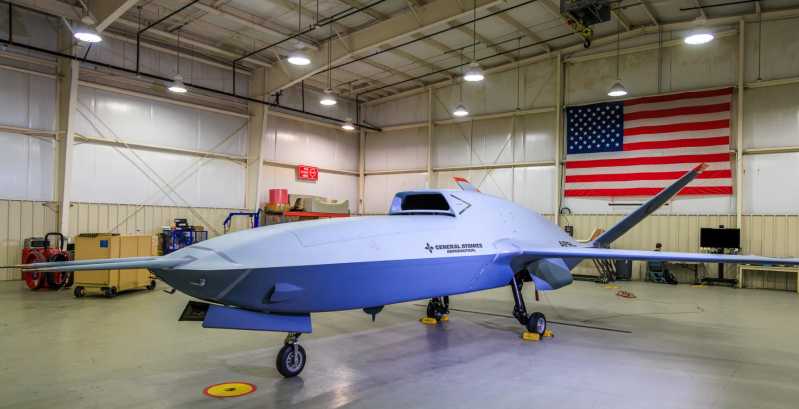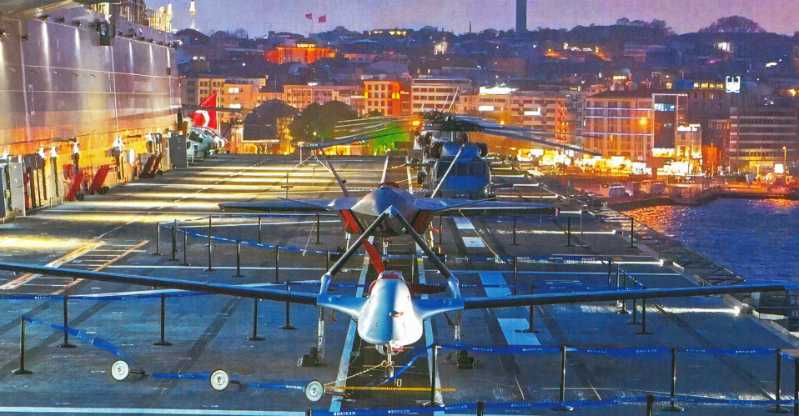In the 1980s, the Arab countries around Israel gradually strengthened the modernization of their naval equipment, and the technological gap between the Israeli and Arab maritime forces was gradually narrowing.
The Egyptian Navy introduced six Ramadan-class large missile boats from the British Vosper Thornycroft Shipyard, and their combat performance was no less than that of the "Saar" 4.
In addition to introducing four Badr-class light missile frigates from the Seattle Tacoma Shipyard in the United States and nine Al-Hiddiq-class large missile boats from the Peterson Shipyard in Wisconsin, the Saudi Navy also ordered four 2,000-ton Medina-class (F2000S) missile frigates from the French CNIM company.
The Libyan Navy under Gaddafi also expanded greatly: 9 "Women Warrior" II missile boats were introduced from the Normandy Mechanical Shipyard in France; 1 Mk7 missile frigate was introduced from the Vosper Thornycroft Shipyard in the UK (the Iranian Navy is also equipped with this type of ship); 4 Assad-class large missile boats were introduced from the Fincantieri Shipyard in Italy; 2 Coni III-class (1159TP) missile frigates and 4 Nanuchka II-class (1234) large missile boats were purchased from the Soviet Union.
In addition, the modernization of the navies of Iraq, Algeria, the United Arab Emirates, Qatar and other countries has also made considerable progress.
The successive commissioning of the above-mentioned ships has not only formed a great advantage in quantity, but also surpassed the Israeli Navy’s similar equipment in terms of quality. The sense of crisis of the Israeli Navy has gradually become stronger.
In addition, the improvement potential of the two sub-models of the "Saar" 4.5 has been exhausted, and it cannot meet the combat needs of the Israeli Navy in the 1990s. It is true that they have achieved brilliant results in actual combat, but Israel has always been keen on the future battlefield. The Israeli Navy urgently needs a larger and stronger surface combat ship. After experiencing the strategic transformation of "from big to small", the surface ships of the Israeli Navy have ushered in a gorgeous transformation of "from small to big".
In 1983, the Israeli Navy officially decided to develop a new generation of light missile frigates and put forward a detailed technical roadmap, requiring excellent air defense, anti-submarine, and anti-ship capabilities, and the hull size and tonnage must be strictly controlled to reduce the construction cost. According to the plan, this will be a new type of surface combat ship with the strongest combat capability and the most advanced technology in the history of the Israeli Navy, with a strong combat capability that surpasses any opponent of the same level. There is no doubt that its performance requirements far exceed Israel’s ship development capabilities. In the choice between self-development and introduction of foreign technology, Israel can only choose the latter. But at that time, there were no ready-made products in the world military ship market that could meet the stringent requirements of the Israeli Navy. It was necessary to develop a new type of ship that met the needs of the Israeli Navy. Its technical risks and cost control would bring unprecedented challenges to the manufacturers and contractors.
In the political environment and economic background at that time, there were only a handful of manufacturers that could meet the stringent technical and cost control requirements of the Israeli Navy. In addition to the French Normandy Mechanical Shipyard, the contractor of the "Saar" 1/2/3 type, the most likely to take orders were only German and American shipyards. The former has been providing special financial subsidies to support Israel’s military development for many years as compensation for the Jews since World War II, while the United States is Israel’s largest military aid country, and the shipbuilding companies of the two countries are strong and capable of developing products that meet the needs of the Israeli Navy.
The outside world is unanimously optimistic that German shipbuilding companies will win this "big order", but after weighing the pros and cons, in March 1988, Israel chose to sign a contract with Northrop Grumman Ship Systems of the United States to build three new multi-mission missile frigates on the basis of the United States’ "Foreign Military Assistance" (FMS) to Israel, and the German shipyard was unfortunately out of the game. The ship design was jointly carried out by the US Navy John McMullen Jr. Shipbuilding Company and the Israeli Navy team, which met the needs of the Israeli Navy to the greatest extent and was quite customized. The overall design of the ship was completed in 1990. The construction work was undertaken by Rockwell and Litton Ingalls Shipyards. Together with weapons and ship electrical systems, the cost of each ship was nearly US$400 million, which was close to the cost of mainstream multi-purpose frigates in the West at that time, which shows how expensive it was. Without the "bottom line" of US military aid, it would undoubtedly be very difficult for Israel’s defense budget alone to support this project. According to tradition, the Israeli Navy named this new ship the "Saar" 5-class light frigate. At this point, the development of the German-origin "Saar series missile boats" in Israel has come to an end.
Basic design
The "Saar" 5 type combines the essence of the US military shipbuilding industry design and the Israeli Navy’s ultimate pursuit of the performance of small and medium-sized surface combat ships. It is a highly innovative warship, representing the top level of small and medium-sized surface combat ship design in Western countries at that time. Its excellent hull integrated design is not outdated even today, which shows its avant-garde design concept at that time.
Overall layout
The "Saar" 5 type adopts a traditional monohull design, with a length of 85 meters, a width of 11.9 meters, a draft of 3.2 meters, a length-to-width ratio of about 7.1, a standard displacement of 1092 tons, and a full load displacement of 1316 tons. It is not big in size and is just a "lightweight player" among Western counterparts, but compared with the "Saar" 4.5 The full load displacement of the Saar 5 increased by more than 1.6 times, making it the largest surface combat ship in the navy at that time.
Under the design of engineers from Northrop Grumman, a giant in radar stealth technology, the stealth performance of the Saar 5 is first-class. It adopts the most cutting-edge scientific research results of Western military ships at that time. The hull design focuses on reducing the characteristic signal of radar targets, while minimizing the main size and weight, and widely uses active and passive interference measures to improve battlefield survivability. For example, new composite materials and the latest noise reduction technology are used; Lightweight sound insulation materials are widely applied on the inner surface of the hull; thermal/acoustic insulation materials are applied on the inner surface of the engine room; low-radiation coefficient materials are applied on the surface of the hull and superstructure structure to reduce infrared characteristic signals; the surface of the superstructure structure adopts an inward-inclined design to minimize vertical surfaces to reduce radar reflection characteristics; these stealth designs are superior to any type of US surface combat ship at the time, fully demonstrating the strong industrial design capabilities of US military shipbuilding, and together with the Lafayette-class frigates of the French Navy at the time, they opened the prelude to the "stealth era" of surface warships.
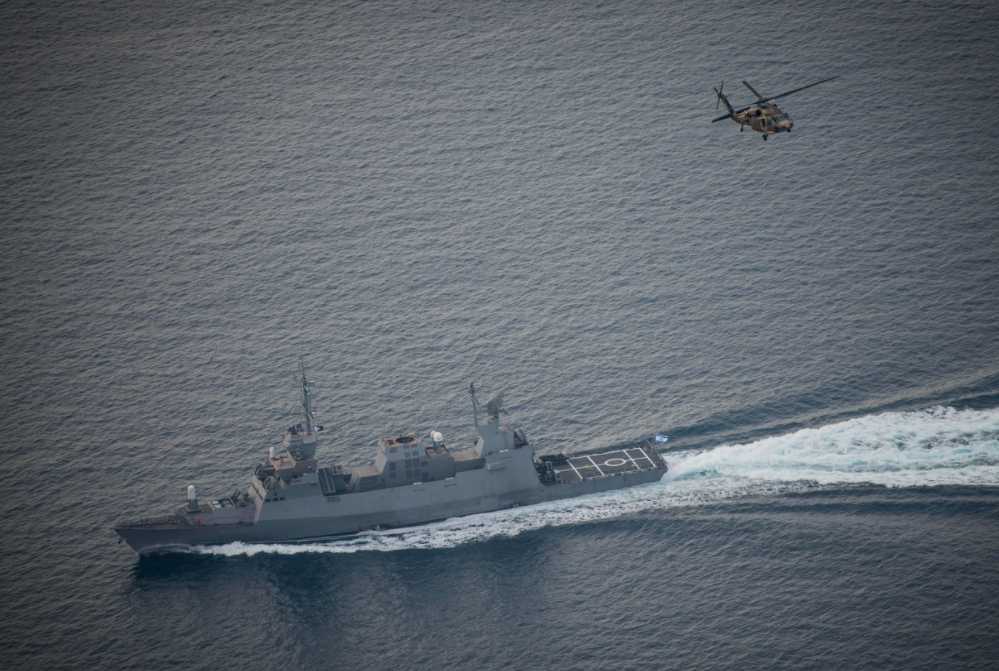
The superstructure adopts an integrated fully enclosed structure design, which is simple and smooth. The cross section of the bow is a deep V-shaped, with a broken line running through the hull. A pair of bilge keels accounting for about 1/4 of the ship’s length are set in the underwater part of the middle of the hull. It has good lateral and longitudinal stability under high sea conditions. In sea conditions of level 4, the deck can be prevented from being too wet due to waves. The full load displacement of this class of ships is only more than 1,300 tons, which is related to the strict reward and punishment measures adopted in the construction contract. In order to reduce weight, the design team racked their brains: the superstructure is built with aluminum alloy, and the mast adopts a closed structure. In the middle of the hull is a huge chimney with exaggerated proportions. A broken line is 1/3 above it. The upper and lower outer walls are both inward-inclined. The infrared waste heat signal characteristics generated by the power system are reduced by the circulating water spray system installed in the flue. The structural design of the "Saar" 5 type fully adopts the US Navy ship standards. The design of important systems must withstand the inspection of the US Navy’s impact identification standards, and electrical corrosion protection is widely used. A folding arm crane is also set up on the left side of the hangar door, which can be used to hoist/recover rigid inflatable boats or carry out supply operations.
Power system
The "Saar" 5 type adopts a diesel-fuel alternating (CODOG) power system, dual-shaft dual-propeller propulsion, and the main engine uses a mature and reliable American General Electric (GE) LM 2500 gas turbine with an output power of 22.38 MW. This is the first time that the Navy has used gas turbines as the power system for surface combat ships. It is equipped with two German-made MTU 12V 1163 TB82 diesel engines with a power of 4.86 MW. The output power of the entire power system is as high as 26.9 MW, driving two 5-blade adjustable pitch propellers. With the support of surging power, the maximum speed of the "Saar" 5 type reaches 33 knots, and the endurance at a speed of 17 knots is 3,500 nautical miles. The self-sustaining speed and range of 24 days can fully meet the mission requirements of the Israeli Navy in any sea area in the Mediterranean and the Red Sea.
Crew establishment
The "Saar" 5 type has a high degree of automation, and the mechanical control system does not require personnel to operate. The crew establishment is only 74 people (including 20 officers and 10 aviation personnel). The automatic control and monitoring of all main engines, auxiliary engines and damage control can be completed by 3 adjustable control consoles in the ship’s mechanical control room. The integrated command and control system also has a standard adjustable display console. In order to better implement protection, based on actual combat experience, the full-ship combat command center of the "Saar" 5 type is located in the front of the ship, and the intelligence and control of some combat systems are completed in the backup emergency combat command center at the bridge and the stern to prevent the occurrence of a loss of all losses.
Electronic equipment
Electronic systems with excellent performance and powerful functions are the excellent traditions that the Israeli army has always adhered to in the development of its land, sea and air equipment. It is also one of its important "magic weapons" to defeat the enemy. The "Saar" 5 type has brought this advantage to the extreme. The comprehensive performance of its ship electrical equipment not only far exceeds that of its opponents, but also most of it has been domestically produced.
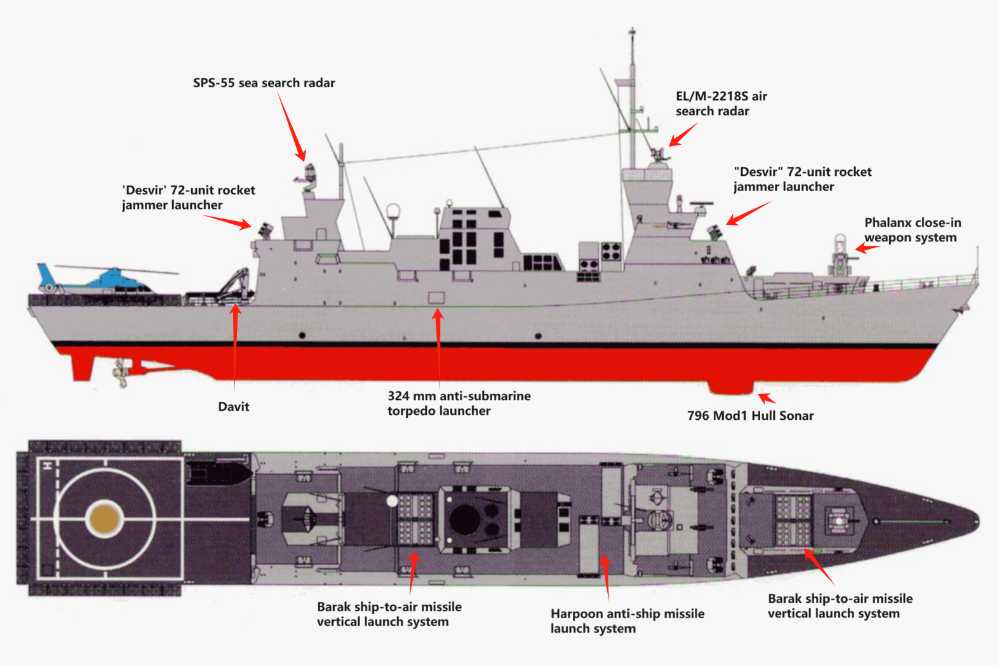
Combat management system
The "Saar" 5 type adopts the standard combat management system developed by the country-Unifed Combat System (UCS), including the Naval Tactical Command System (NTCCS) using the Elta EL/S-9000 computer and the Reshet data link. The UCS system is developed by Israel Aerospace Industries (AI), and Elbit and Tadiran are responsible for the development of combat data and communication subsystems respectively. The system can provide battlefield communication services, combat situation simulation display, intelligence management and weapon system allocation for the entire ship. The system has multiple independent control terminals that can handle air defense, anti-submarine, anti-ship, electronic warfare, navigation and communication information separately.
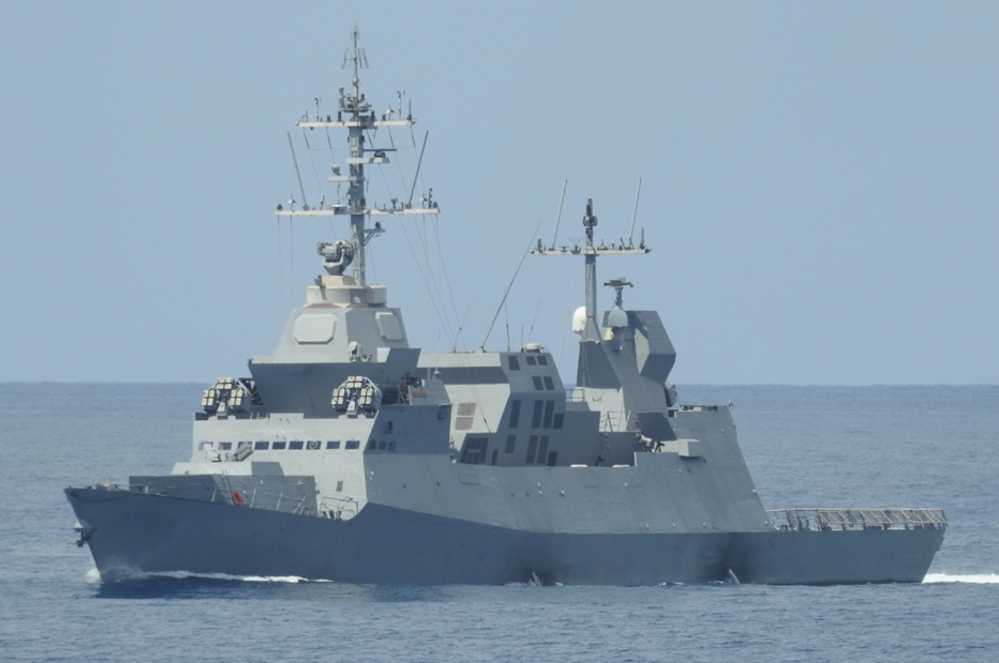
Another one is installed directly behind the rear mast to achieve 360° coverage.
Radar system
The various types of radars equipped on the entire ship are basically purchased from domestic Israeli manufacturers. The core situational awareness system uses the ELM-2218S air search radar developed by Elta, installed on the top of the rear mast above the hangar, working in the EF band, with a maximum search distance of 350 kilometers. The fire control radar also uses Elta’s EL/M-2221 GM STGR, working in the IJK band, installed on the platform below the main mast, mainly used to control ship-to-air missiles. An I-band Cardion SPS-55 radar is installed on the top platform of the main mast for sea search of the entire ship. The I-band navigation radar is installed on the front support platform below the main mast.
Sonar system
The core of the "Saar" 5-type full-ship underwater situational awareness system is a 796 Mod1 hull sonar developed by the American EDO company and a towed linear array sonar developed by Rafael. The two work together to accurately search and discover enemy underwater targets in a complex ocean acoustic environment. The specific performance is still classified as highly confidential by the Israeli military. Among the ships of the same tonnage in the Western navies, the sonar system of this type of ship is luxurious, which also gives it a strong underwater situational awareness capability.
Electronic warfare system
The Saar 5 type inherits the powerful electronic warfare capabilities of its predecessors, with complete functions and perfection, and is not inferior to the large and medium-sized missile frigates of the Western navies of the same era. The whole ship is equipped with 3 72-unit Elbit "Deseaver" chaff and infrared rocket illumination/jamming bomb launchers. Unlike the "Deseaver" equipped on the "Haize" type, the launch tubes are arranged in a finished shape, installed on both sides of the top of the bridge and the top deck of the hangar, covering the front and rear hemispheres respectively, and can launch 6 types of infrared and chaff rocket jammers. 4 12-unit rocket jammer launchers are located on the deck behind the bow missile vertical launch device, two by two, and fired towards both sides. In terms of underwater defense, it uses a set of ATC-1 developed by Rafael or the American AN/SLQ-25 "Water Spirit" towed acoustic torpedo decoy system. The latter is a non-contact acoustic soft countermeasure system widely equipped on large and medium-sized naval ships in Europe and the United States. The "Water Spirit" system can simulate the acoustic characteristic signal of the mother ship’s navigation at a distance of 400 meters from the ship, inducing the acoustic self-guided torpedo to deviate from the attack route, thereby ensuring the safety of the ship. It is the "talisman" of the entire ship against enemy torpedo attacks. The electronic support/countermeasures system uses a set of Elisra NS-9003/9005 equipment, which is also equipped on the "Saar" 4/4.5 type, and has also been purchased by Peru, the Philippines and other countries to equip their own surface ships. In addition, there are 2 sets of RAN-1010 multi-beam array transmitters (MBAT) on the ship. According to the consistent confidentiality of the Israeli army, some unknown "mysterious" equipment is also installed on the "Saar" 5 type, which is speculated to be an extremely confidential electronic warfare system.
Optoelectronic system
In the field of shipborne optoelectronic detection systems, Israel started early and developed rapidly, and is in a world-leading position along with the United States and some European countries. Rafael’s series of products are well-known in the industry. The "Saar" 5 type uses 2~3 Elop’s MSIS optoelectronic directors, which contain thermal imagers and laser rangefinders. They can perform optoelectronic detection and shooting control tasks and are installed on the main mast front support platform and the rear mast platform. In addition, the ship is also equipped with traditional equipment such as optical directors.
Weapon system
The heavy firepower gene of the "Saar" family has been well inherited in the "Saar" 5. Although the overall size of the ship is not large, the weapon system has complete air defense, anti-ship and anti-submarine combat capabilities, and the layout design is more reasonable, and the offense and defense are more complete. It is not inferior to the mainstream medium-sized missile frigates of the navies of European and American countries at the same time.
Air defense
The core of the ship’s air defense operations is the "Barak" 1 ship-to-air missile system jointly developed by Israel Aerospace Industries and Rafael. Two 32-unit vertical launch systems are installed on the protruding gun deck at the bow of the ship. The "Barak" 1 is called "the line of defense that can never be broken" by the Israelis. The missile uses radar guidance and trigger fuze, with a total weight of 98 kg, a warhead weight of 22 kg, a range of 10 kilometers, a maximum flight speed of 2 Mach, and a certain anti-surface target capability. Two Barak 1 vertical launch systems can basically withstand the enemy’s saturation air strikes.
Naval guns are another important air defense weapon. In the initial design of the Saar 5, the bow A gun position was planned to be equipped with an Oto Melara 76mm rapid-fire gun: but in the final design, it was replaced by a 6-barrel 20mm Phalanx close-in defense gun. This method also continues the practice of not installing medium-caliber main guns on the bow since the Saar 4 (referring to the modified version), which is quite rare among ships of the same level. Considering that the Israeli navy basically does not have to undertake land attack missions, such a configuration is undoubtedly more conducive to improving the air defense combat capability of the entire ship. In close-range naval engagements, the Phalanx system also has a good killing effect. Two 7.62mm machine guns are installed on the decks on both sides of the main mast to deal with "low, slow and small" targets such as suicide boats and drones. Later, they were replaced with two 25mm "Typhoon" remote weapon stations.
Anti-ship
In terms of anti-ship missiles, there are domestic "Gabriel" and American "Harpoon" to choose from. As a US aid project, the "Saar" 5 type chose the "Harpoon". Two 4-mounted Mk-141 launchers are set on the middle deck of the hull between the front bridge and the chimney. During use, the missile launcher was optimized and modified for the purpose of improving radar stealth performance: the overall appearance is more sci-fi. The "Harpoon" missile has a range of 130 kilometers, flies at high subsonic speed, and weighs 227 kilograms. It is widely equipped on naval surface ships and submarines. According to some information, the "Saar" 5 The Saar 5 is also equipped with the Gabriel 2 anti-ship missile, but judging from the length of the launcher, this possibility is not high.
Anti-submarine
The Saar 5 continues the configuration of the Saar 4.5 and Hydes, which focuses on anti-submarine warfare. It uses two triple-mounted Mk-32 324 mm torpedo launchers, which are installed on the bulwarks on both sides below the chimney in the middle of the hull. It is used to launch Honeywell Mk 46 light anti-submarine torpedoes. The torpedo warhead weighs 44 kilograms, has a range of 11 kilometers at a speed of 40 knots, and can work at a depth of up to 600 meters. The main combat target is the Type 033 conventional submarine purchased by the Egyptian Navy from East Asia at that time.
The Saar 5 At the beginning of the design, it was planned to use the SH-2F "Siren" light multi-purpose shipborne helicopter of the American Kaman Company. This helicopter is compact in size and is very suitable for the relatively narrow flight deck of the "Saar" 5. It can perform search and rescue, shore support, relay guidance, anti-submarine, anti-ship and other tasks. But the Israeli Navy finally chose the French H-665A "Dolphin" light multi-purpose helicopter. Interestingly, these "Dolphin" helicopters were purchased by the Israeli Navy’s 1996 fiscal year budget, but the right to use them is shared with the Israeli Air Force. The "Saar" 5 is also the second type of surface combat ship that can carry helicopters after the "Saar" 4.5 "Alia" type. Its hangar can also meet the take-off and landing requirements of the larger Sikorsky S-76 helicopter.
Overall, the "Saar" 5 The comprehensive combat capability of the Saar 5 is outstanding among the light frigates of the same level in various countries in the world, and even surpasses the combat capability of higher-level ships. In the Mediterranean and Red Sea, facing the surface ships of the navies of Egypt, Syria, Libya, Saudi Arabia and other countries, it undoubtedly has an absolute advantage. The comprehensive combat level can completely crush any type of ships of the same level of the Arab navies, and establish an invincible image of the navy as "invincible" in the Middle East.
Construction, service and upgrade
Construction The "Saar" 5 type was originally planned to purchase 6 ships, and was built by Pascagoula Ingalls Shipyard in Mississippi, one of the most powerful military shipyards in the United States on the Gulf of Mexico.
On February 24, 1992, the keel laying ceremony of the first ship was held, and the construction officially started. It was launched on February 9, 1993, set sail for home in March 1994, and was commissioned on May 24 of the same year. The ship inherited the name of INS Eilat, which was sunk by Egypt, and the hull number is 501, so this class of ships is also called the Eilat class.
On September 25, 1992, the No. 2 ship held a steel plate cutting ceremony. It was launched on August 20, 1993 and named "INS Lahav (also known as "Blade", hull number 502), and was commissioned on September 23, 1994: On April 5, 1993, the No. 3 ship started construction, and was launched on March 4, 1994. It was named "INS Hanit (also known as "Lance", hull number 503), and was commissioned on February 7, 1995.
Service history
As the "iron fist" of the Israeli Navy, the "Saar" 5 type was not very active after its commissioning. After the end of the Cold War, Israel’s security threats in the Mediterranean and Red Sea suddenly decreased. This type of ship was more involved in the Israeli military’s maritime blockade of the Lebanese coast and the Gaza Strip, and rarely participated in direct strikes. This situation continued until The Lebanese-Israeli conflict broke out in 2006.
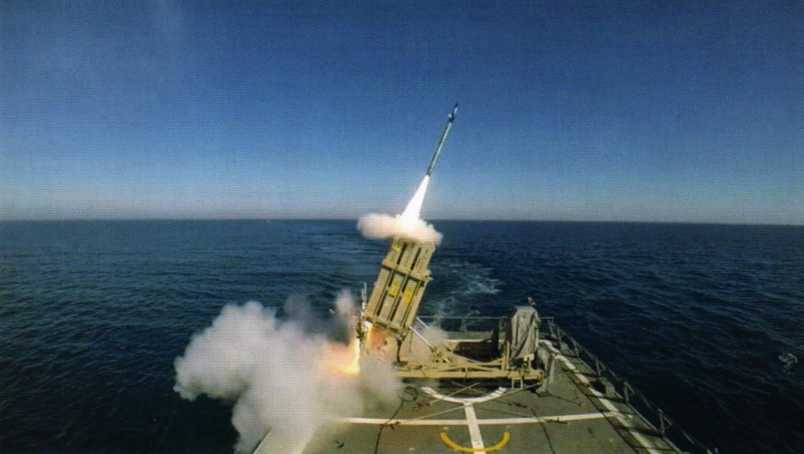
In this conflict, the "Hanit" was responsible for performing battlefield surveillance and coastal blockade tasks in the waters 16 kilometers from the Lebanese coast. On the evening of July 14, it was hit by a suspected C-802 shore-based anti-ship missile launched by the Lebanese Hezbollah armed forces. Due to the subjective belief that the Hezbollah guerrillas had no anti-ship capabilities, the ship shut down the air defense radar system in advance, and the captain was unaware of this. As a result, the tragedy was caused by negligence. The anti-ship missile hit the helicopter hangar behind the ship, causing a fire and killing four crew members. After more than 8 hours of damage control, the ship returned to Israel under its own power and was quickly repaired in a short period of time. Without replacing any major combat systems and equipment, it was able to resume combat capability in September. Since there are many reports on this incident online and the incident report is vague, I will not elaborate on it here.
Upgrade
After entering service, the shipborne electronic system of the Saar 5 has always maintained a leading level in the Middle East. During this period, only small-scale upgrades were carried out. However, with the insufficient situational awareness capabilities of this type of ship exposed in the 2006 Lebanon-Israel conflict, the Israeli Navy was forced to speed up the upgrade process of this type of ship. From 2012 to 2013, the Israeli Navy began to carry out the largest-scale modification and upgrade of the "Eilat" and "Rahaf" since their commissioning, comprehensively improving the battlefield situation awareness capability to cope with the increasingly complex maritime security environment in the Middle East, especially the anti-ship missile threat that Iran continues to export and spread in the region. After the modification, the two ships returned to the combat sequence in 2014. The core of the upgrade project is to replace the EL/M-2248 multi-function active phased array radar. A more modern, fuller and thicker closed tower structure mast has been added to the top deck of the bridge for the installation of three phased array radar antennas. The size of the rear mast has also been increased, and another antenna is installed directly behind it to achieve 360° coverage. The modified "Saar" 5 has become the world’s smallest surface ship equipped with a multi-faceted active phased array radar system. EL/M-2248 The radar is also known as the "Multi-Function Surveillance and Threat Warning Radar (MF-STAR). It has powerful search, tracking and navigation functions. The air detection range reaches 250 kilometers, and the detection range for low-altitude incoming targets also reaches 25 kilometers. It has the ability to track multiple targets at the same time or track while searching (TWS), and its overall size is compact and suitable for a wide range of platforms. The second is to enhance the air defense capability of the entire ship. After replacing the "Barak" 8 ship-to-air missile with a maximum range of 70 kilometers, the "Saar" 5 type has become a veritable "shield" ship. This type of ship also conducted sea trials of the "Iron Dome" defense system to verify the system for the "Saar" 6 type. The test was carried out in the form of the "Iron Dome" land-based launch device directly on board the ship, and it was not integrated into the vertical launch system.


